What is Nitrate Poisoning?
- Nitrate is converted to nitrite and absorbed from digested feed into the cow/sheep where it attaches to haemoglobin, taking the place of oxygen in the blood.
- This causes the following symptoms in the animal: within 15-20 minutes you may see symptoms including staggering, laboured breathing, spasms and foaming at the mouth. Affected animals often lie down, stretched out, and may thrash about. They are often described as appearing to be drunk. Mucous membranes will be blue and blood will be brown.
- If levels are high enough, or treatment is not administered quickly, the only symptom you may see is a dead animal.
- Horses and other non-ruminant animals are less affected by nitrate because they don’t convert it to nitrite. If levels are high though, the nitrate can damage the lining of their gut, causing a different range of symptoms.
Prevention and Treatment
- Nitrate poisoning can be treated effectively if the treatment is administered immediately after the first poisoning symptoms appear.
- Feed with higher levels of nitrate can be mixed at low levels and fed as part of a total ration, to slow down the rate of nitrite entering the blood.
- Introduce stock slowly to feed (eg. over several days) and do not allow hungry stock to gorge on the product.
- Some licks and supplements can assist. Talk to your advisor or input suppliers.
- Feed Central recommends that you conduct your own research including web and via your regular advisors.
How Does It Buld Up in Plants
- Plants absorb nitrogen from the soil and use it to make proteins during growth and maturation. If the plant is stressed enough to reduce growth, then the plant stores excess nitrogen as nitrates.
- Some plants are more prone than others to do this (they are known as ‘nitrate accumulators’), but most plants will accumulate nitrates to some degree if stressed.
- Most common sources of nitrate poisoning in Australia include oats, sorghum, maize, sudan grass, Johnson grass, canola, lucerne, kikuyu, turnip and sugar beet tops, soybean, wheat, barley and a range of weeds.
What Can Affect Nitrate Levels in Plants?

Part of the Plant
- Stems and stalks in the lower 1/3 of a plant normally contain higher levels than leaves, flowers or grain.
- Young plants have more nitrate than older plants.
- Tillers and branches (‘suckers’) have the highest levels, because they are the least mature.
- The heads are low in nitrates.
- The seeds (grain) contain very little.
- See also our Prussic Acid Factsheet for information on other toxins in the plant.
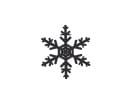
Freezing
- Frost may kill only the tops of plants (mainly leaf), leaving the lower portion (mainly roots and stalk) alive. This increases the overall concentration of nitrate in the plant,
- New shoots or further green growth is apt to have higher levels initially.
- Further stress of any type will cause the plant to maintain higher levels in the new growth or re-growth.
- Cloudy or cold weather slowing growth can also increase nitrates.

Plant Maturity
- Highest levels are reached before flowering and prior to emergence of the head, as less protein has been formed.
- As plants mature, more proteins are produced, causing nitrate content in the plant as a whole to decrease.
- See also our Prussic Acid Factsheet for information on other toxins in the plant.

Drought
- Drought-affected plants have a higher risk of dangerous levels because their growth is reduced.
- Wilting also increases nitrate levels.
- Nitrate levels will temporarily increase for a week after rain or irrigation.
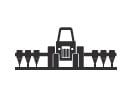
Fertiliser
- High Nitrogen rates or where manure/ effluent has been applied often cause levels to increase.
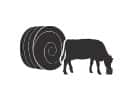
Grazing or Baling for Hay/Silage
GRAZING
- Heavy or intense strip grazing where cattle are likely to eat the lower stems carries a risk of nitrate poisoning occurring.
HAY
- Baling/hay-making does not increase or decrease nitrate levels in the plant.
SILAGE
- Microbial breakdown during fermentation will reduce the total nitrate levels in the final product by 40-60% after 6 weeks.
- Less total nitrate remains after ensiling, compared to making hay from the crop; but again, there is a risk that toxic levels remain.
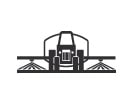
Herbicides
- 2,4-D may cause nitrate content to increase in forages. The effect may last several weeks.
REFERENCING & FURTHER RESOURCES
Feed Central has used information from the following sources to compile this fact sheet. We recommend growers review this and other information.
ARS. (2019). Nitrate-accumulating plants : USDA ARS. [online] Available at: https://www.ars.usda.gov/pacific-west-area/logan-ut/poisonous-plant-research/docs/nitrate-accumulating-plants/ [Accessed 5 Feb. 2019].
DPI. (2019). [online] Available at: http://www.dpi.nsw.gov.au/__data/assets/pdf_file/0013/111190/prussic-acid-poisoning-inlivestock.pdf [Accessed 5 Feb. 2019].
Agrilifecdn.tamu.edu. (2019). [online] Available at: https://agrilifecdn.tamu.edu/coastalbend/files/2016/06/PUB_forage_Nitrates-and-Prussic-Acid-in-Forages.pdf [Accessed 6 Feb. 2019].
Obtaining Feed Samples for Testing
Taking a test sample is simple … Just follow the following steps
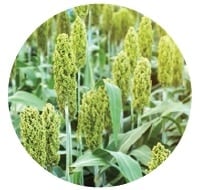
Sampling a
STANDING CROP
- Choose a diagonal line to walk along and stop every 100 steps or so (fewer if paddock is small, more if paddock is large),
- Pull out by the roots the plant that is at your right foot each time.
- Put all collected plants into a garbage bag. Ten sample points (plants) should be sufficient for most paddocks.
- After collection, choose a sufficient amount of the plants you have collected, cut off the roots (cut the stem from the roots at cutting or grazing height) and roll the plants up as tightly as you can, bending the stalk if you have to, so that they fill a large clipseal/sealable plastic bag, such as the Feed Central sample bag.
- Squeeze out or vacuum extract as much air as possible then seal the bag to prevent air getting back in.
- Keep sample in the fridge (don’t freeze) until time to post to us. Send Express Post if possible. Sample will reach us in good condition if these instructions are followed.
- Express Post to Feed Central 10775 Warrego Highway Charlton, Toowoomba Qld 4350 (Australia Post provides a good service, but courier services are also available),
OR… Use the On-Farm Test Kit provided by Feed Central.
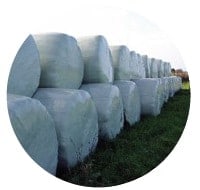
Sampling
HAY OR SILAGE
- To avoid getting results that under or over estimate the true levels of cyanide, sample the interior of a number of bales, ideally using a bale corer/probe to take the sample.
- If no corer is available, be sure to take the sample from at least 100mm (4 inches) depth inside the bale.
- If silage is in a stack, sample a freshly opened surface, digging as deep as you can.
- Choose a sufficient amount of the material you have collected so that you half fill a large clipseal/sealable plastic bag, such as the Feed Central sample bag (approx 500g).
- Squeeze out or vacuum extract as much air as possible then seal the bag to prevent air getting back in.
- Keep sample in the fridge (don’t freeze) until time to post to us. Send Express Post if possible. Sample will reach us in good condition if these instructions are followed.
- Express Post to Feed Central 10775 Warrego Highway Charlton, Toowoomba Qld 4350 (Australia Post provides a good service, but courier services are also available),
OR… Use the On-Farm Test Kit provided by Feed Central.
NOTE REGARDING THE SALE OF HAY OR SILAGE TO OTHERS:
By buying a kit or test from us you agree to not guarantee to the buyer that the product is safe. We recommend that you insist on the buyers obtaining their own test prior to feeding and advise the buyer to use sound management practices when feeding sorghum hay.
PLEASE NOTE: Feed Central testing services and test kits are designed to give information in a convenient manner. Prussic acids and nitrates are complex and highly variable, for example levels can change in the paddock / product over time, levels are different all over the paddock, sampling and animal management practices differ from farm to farm (there are many variables). Feed Central is not endeavouring to provide an absolute / risk-free answer or test. Our service and the testing kit should be used as a guide only and should never take the place of best practice management techniques. Farmers should seek alternative advice from their normal farm consultants and input suppliers; undertake their own independent research and combine this with their own experience to determine best practice for their property / animals.

